04.18.2022
By uscbknpt
Diversity Story Slam 2022
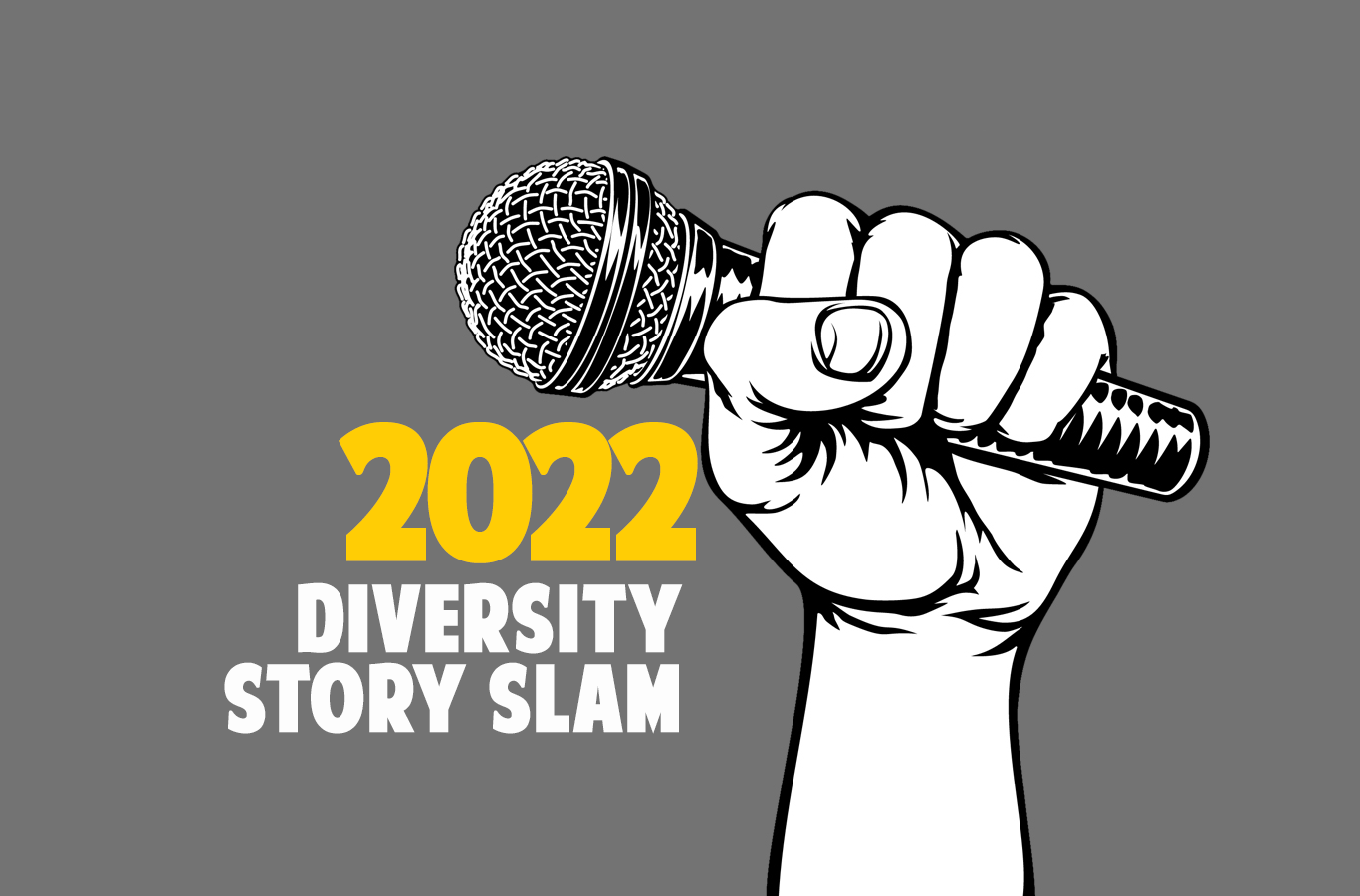
EARLIER THIS MONTH, the USC Division of Biokinesiology and Physical Therapy held its third annual Diversity Story Slam. During the virtual storytelling event, community members were invited to share stories concerning moments they were made aware of something impactful that they had not previously seen, noticed something in a different way or changed their minds about a long-held perspective. They could also share a lived experience around an identity such as race and ethnicity, sexual orientation, gender, religion, language, citizenship, class or ability. Below are a few entries (lightly edited for print) that were shared during the 2022 Diversity Story Slam:
The Impact of Storytelling & Listening on Native American Health: Mary’s Story
By Natalie Weeks O’Neal DPT ’06
“MARY” WAS A 35-YEAR-OLD FEMALE from Oklahoma, raised on the Choctaw reservation.
As a teenager, she was placed in foster care at a group home.
She was born with a bony formation in her feet that caused mild discomfort when wearing moccasins for dancing and made her feet too wide to wear the cute shoes her girlfriends wore. Her mom and grandmother were also born with the same deformity, which caused the great toe and first ray to bow in and worsened with age.
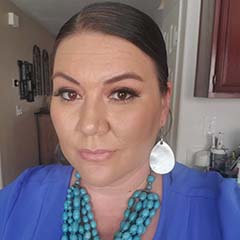
When she was 16, the foster home took all the girls in for check-ups at the local Indian Health Service clinic.
A young white doctor offered to “fix” the deformity for her while she was at a visit. The doctor did not explain the procedure, and she agreed. She had no guardian or family present in the room to aid her in this decision process.
The doctor proceeded to have her tied down and performed the surgical procedure with only local anesthetic for the pain. It was excruciating, and she shared the story with me in great detail at the initial PT evaluation.
She described the screams she made so loud that the other foster girls tried to unlock the exam room door to help her.
She remembered the sound of the surgical tools and the smell of the nurse’s perfume who held her down and refused to look Mary in her eyes during her pleas for help.
As I sat listening to the story, tears started to form in my eyes as I imagined the trauma of this experience. It took all my composure to hold them back and allow her to finish her story without interruption.
She spoke of the resentment she had towards the doctors, nurses, foster home and even her own mother for the substance addiction that caused Mary to be taken away.
The procedure did not correct the deformation, and she was left traumatized. Even after 20 years, including reconnecting with her mother and a building a successful career as a performing artist, she refused to allow any healthcare providers offer her care for her feet, which had become chronically painful.
She was limited to standing for only short periods of time and wore slipper-like shoes due to the pain of more supportive footwear. The first few PT sessions consisted of me continuing to listen to her story and answering her questions about foot mechanics, posture and my experiences as a Native American woman like her who grew up on a rural reservation close to my culture.
The referring physician was also Native American, and she came to a session to also answer questions from the patient.
Over time, the patient was open to our slowly developed plan of care, which focused on giving the patient a sense of empowerment over her condition and incorporated her traditional healing practice.
She would go to prayer ceremony in Oklahoma held by a medicine man from her tribe who blessed her feet. Mary shared with me that the medicine man also prayed for my health and continued wisdom to be able to help Mary and future Native American patients in need.
I was given a gift item from her homelands as a token of gratitude. After 6 months of once-a-week sessions, the patient was open to custom orthoses and gradually became more tolerant of standing and upright exercise.
The treatment sessions were heavily focused on therapeutic exercise with limited manual therapy as she still was reactive to efforts to touch her feet, often wincing and stopping mid-sentence to focus.
I decided the benefit of the manual therapy did not outweigh the trauma response. She was discharged to home program, and I was able to support her at her first 5K walk and dance performance a year later.
It wasn’t the PT skills that helped me reach the patient. It was recognizing and understanding the complex trauma all too often faced by Indigenous peoples.
Oral history in the form of storytelling is the traditional method of communication by most Native Americans. Listening to Mary’s story of underlying trauma was the most powerful tool in my physical therapy tool box.
Discover Your Potential
By Lou Castro DPT ’22
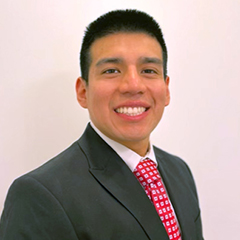
Hispanic, overweight, lonely and insecure
From age eight to sixteen, I’m not sure?
The Doctor said no more rice or tortillas..
WHAT
are you serious right now?
Yes we have to get your waist down
Oh well, let’s begin
Anyways
We each have a sad story
With different chapters, characters and events
I hope I’m not boring
Trying to fit in, to find the right crew
Juggling life growing up
Unsure
Yet staying away from drugs and alcohol
I just want to be accepted and cool
Unfortunately, was always getting in trouble
At home, in class and at school…
Parents always arguing
Yet they never finished high-school
Home was a war zone
Yelling, screaming, and tears
Damn
Alcoholism taking another family victim
Seems that this war never ends
I used any excuse to be away
To escape the pain
Oddly enough, alcohol helped me stay sane
Here we are 10th grade
Another test failed
A dozen visits to the principal’s office complete
Louis, what’s happening? Your going off the rails
College was out of the picture
I did not even know what it was
Other than parties, natural ice and drugs
Confused why the topic was so big
Residency/grad school? Pshh forget that shit
Another test
Wait
89….Woah I passed?
Who is this?
Louis looks like you might have a chance
You were walking in the dark
Alone, no lights, no path, no guide
Until someone helped you recognize a bright light
A potential, you could not see, Louis you were blind
The small flame inside
That shines bright
A soft voice
That helps you reflect
Remember why your alive!
Along the journey, things will challenge you
A few bad chapters, disappointments and bruises
Does not define you
Keep in mind it’s hard,
and you will fall
But get up, you got this
What matters is … how you respond
Each moment is a new moment
Each day is a new day
You dictate your attitude
Based on what you say
Adversity is scary
But do not be afraid
One step at a time
You will cross your finish line
Celebrate small victories
Eh drink some wine!
Challenge yourself
Discover who you are
Don’t give up
because after every storm
The sun and rainbow will shine
Just take a moment
Stand tall, breathe
Look in the mirror
Realize how far you’ve come …
What’s in a Name?
By Leana Mosesian DPT ’23
FOR THOSE OF YOU WHO KNOW ME, you know that I am Persian-Armenian, with a pretty traditional last name: Mosesian.
If you grew up around here in Los Angeles or Glendale, you likely wouldn’t need to guess twice where my family is from, since you probably know an Armenian person with a similar last name to mine … Or maybe you’ve heard of the Kardashians.
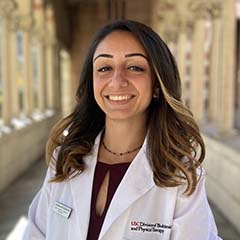
For those of you who do not know, typically, Armenians have a last name that ends with -ian, -yan, or -i –. The suffix -ian means “descendant of,” which gives insight into family history and ancestry roots that originated in Armenia.
When the first Armenian Genocide attempt was taking place in the year 1915, a lot of Armenians were forced to flee to various other countries in order to survive — most commonly Russia, Lebanon, Iran, Syria and so on — which has led to some of the slight variability in our last names and dialects that you might see today.
Throughout war, in the process of fleeing from one’s home country, individuals sometimes alter or change their last names for safety reasons as well as for a chance at starting a new life.
Sometimes, individuals shorten their last names, for example from Mosesian to Moses, to help blend in with a new culture and language and to make pronunciation a little easier.
When my parents’ generation was growing up during the Iran/Iraq war, they faced terrible loss, destruction and forced displacement. Their families had to seek refuge in similar ways as we often see take place with countless other wars — it is a truly horrific and isolating experience to endure.
I can’t help but think to myself, back then, in a time without social media and with fabricated last names: How did anyone keep in touch or know what has become of their childhood friends, their former neighbors, their loved ones?
What I have witnessed in my lifetime is that somehow, many of these individuals have found their way from distant lands to a new home, most prominently here in Los Angeles, and they have replanted their roots.
During my days working in Glendale as a physical therapy aide, naturally I worked with many Armenian patients, and what I discovered often daily, more so from my elderly patients, is that they really like to talk, share their stories and connect: share where they are from, what they did in the old days, pre- or post- war era.
They often ask about myself and where I’m from. I’m born here in Los Angeles, and I am often reminded by these folks how lucky I am that my parents were able to safely make their way to America to give my brother and I more opportunities to live a better life. I try not to take this for granted.
Then they’ll ask about my parents and my grandparents’ names and what city they grew up in … When I mention them, quite a few times there is that sense of elation and excitement as my patients’ faces light up when they recognize a familiar name or hometown.
I’ve encountered some great anecdotes, some including: “I was the local dentist in your mom’s hometown!,” “Your grandfather is so great; he used to help me with odd jobs back in Tehran,” “I wonder if your mom remembers me; we lent her family some food when we had a little extra to share,” “After your mom’s family lost their home, we invited the Vartanians [that is my mother’s maiden name] to stay in our basement for a few months until they could get their green cards.” Interestingly, this happened to be down the street from where my dad grew up, and that’s how my parents first met!
Now that I have had a chance to reflect, I realize that stories like this are more common than I would have ever expected to hear. It’s so heartwarming to know that beyond the hardships these individuals have had to endure, there is still this unique and special way for them to find a sense of purpose and connection.
I guess I never truly realized the value of these conversations I got to have here at home, until I moved away for college to Cal Poly, San Luis Obispo, where my school had a total of nine Armenian students, and five of us were friends from back home in Glendale.
I realized that the separation from my family and their stories really came to light once I left our Los Angeles bubble — and only when I was surrounded by people who couldn’t pronounce my last name or would ask where my family is from and have no idea where or what Armenia is, is when I realized how important family roots really are and how valuable listening to and sharing our ancestors’ stories is in order to enrich our communities beyond our home turf.
In light of this, I have found that whenever I travel or watch TV and happen to look at a list of names or hear a name called that ends with “-ian,” I can’t help but smile. There have been instances when my name is said in public places like at airports or at the grocery store, and someone randomly approaches me, “Are you Armenian? So am I!” It may seem silly, but I am starting to cherish these special moments of cultural connection now more than ever.
In no way would I ever wish to shed any sort of positive light on war, as it has shown time and time again to be senselessly destructive and cause generations of trauma and irreparable damage, but reflecting on the conversations I have gotten to have with survivors of war, recognizing a name means something — and it means even more in the context of war, when individuals are faced with life or death situations.
I’m so blessed to serve in this community and treat these patients physically while also bringing them some peace of mind and joy, maybe a positive memory that can only slightly mitigate their years of repressed trauma.
This deep-rooted connection with my culture and its people is something I can’t imagine my current generation or future ones having — even in spite of our so-called “connectedness” through social media and having more accessible transportation and living arrangements. I hope I can be proved wrong.
I am proud to bear the last name Mosesian, and I hope to continue embodying and sharing my family’s culture in my community here and beyond — wherever my PT journey and life takes me.
Thank you for listening!
The “Know-it-All” New Yorker
By Danielle Long
Assistant Professor of Clinical Physical Therapy
I’D LIKE TO TELL YOU ABOUT A TIME that my PT ego took a big blow.
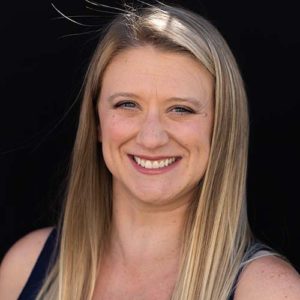
I was working in the pediatric ICU and considered myself an “expert” in preventing pressure ulcers in this population.
Then one day, one of my patients had developed a stage 3 pressure sore, and it was very much my responsibility.
I thought I knew it all … I had done all the training and research, and I was confident that my rigorous attention to detail would prevent something like this from happening. I thought I knew it all, but I was wrong. In healthcare, we are all always learning, every single day. We will never know it all, and our patients will always be our best teachers. So here is my story …
I was a supervisor in the pediatric acute care physical therapy department (PICU) in a major metropolitan hospital in New York City. As the person in charge of dividing up new patients each morning, I slid into my chair around 6:52 a.m. one day, coffee in hand, to look at the new patients that had been admitted to the PICU overnight.
After spreading out the new referrals to each of the PTs on my team, I left my bite-sized NY office to head up to the floors.
The evaluation I had assigned myself was a 7-year-old Black girl who was having a sickle cell crisis. She was admitted overnight, had been intubated and sedated, and a ventilator was helping her breathe.
I walked in the room and saw her mom by her bedside holding her hand and stroking her hair. I put on my best “I know this is not OK, but I’m going to make it as OK as possible” face and started to chat with Mom about her daughter’s likes and dislikes, level of activity, siblings, support systems, favorite dolls and toys (and yes, these are crucial parts of a subjective exam in the pediatric world).
At the end of the PT evaluation, I educated Mom on what to expect from my department and what our role would be during their admission. I encouraged Mom to try to make the room as “normal” as possible — to bring in toys, stuffed animals, clothing and anything that would be a comfort to her.
With the help of my nursing colleagues, we developed a positioning plan and ordered specialized pillows for pressure relief. We assured Mom that we were going to do everything we could to make her as comfortable as possible while her lungs were trying to heal.
With tears in her eyes, she thanked us and went back to holding her daughter’s hand and praying quietly.
I came back the next day for a follow-up PT session and found that the room had been transformed. There were pictures on the wall, she had her own sweatpants on, and she was sporting a pink sparkly zip-up hoodie. Her mom had braided her hair and placed her favorite stuffed animals in her bed. This patient was so loved and had a strong support system. She was still sedated, but she was starting to look like herself again, which I was then able to appreciate since I could now see her adorable smiling face on the wall.
Her hospital stay was relatively uneventful (a great thing to say in the PICU), and I treated her daily along with the rest of my caseload, progressing as usual.
Another part of my role on this unit was to go on “skin rounds” twice a week. This task force was an interdisciplinary team that would go around to each and every patient in the PICU to assess and reassess the patients’ skin integrity. We would check the skin for redness, assess positioning plans, place orders for specialized pillows and make recommendations to the staff and families.
This was a project that I was very proud of, and from the initiation of the project, there had been zero pressure ulcer incidents. This is where I began to get quite cocky, and internally I would feel a little zing of triumph when I would hear about pressure wounds developing on other floors. “Ha! No sores on my floor!” I would say to myself.
I came in again one morning, coffee in hand, and opened my computer to find an email that hit me like a ton of bricks.
One of the nurses from the PICU had sent an email saying that they found a large stage 3 pressure ulcer. “No no no,” I thought, “this must be a mistake.” Reading further in the email, I found that it was my patient with the pictures on the wall and the unicorn in her bed. Nooo, this can’t be right. I headed up to the floor as calmly as possible and went right to the nursing station.
It was true. Under one of the braids that her Mom had lovingly woven for her, there was now a large, open wound.
I was mortified … guilt-ridden, confused, embarrassed and eager to understand what happened.
Her hair was very coarse, and the braids were very tight. We had had many other patients on the floor with French braids and other amazing, fabulous hairstyles, but I didn’t realize that the density of her hair would exert more pressure than others. So, for days, this braid was pressing on her skull and causing a massive open wound that was found by her mom when she attempted to take them out a few days later.
Luckily, her story has a happy ending. The braids came out, the sore healed quickly, and soon she came off the ventilator and got better. By the day of her discharge, we were blowing bubbles in her room and dancing to “Shake it off” by Taylor Swift. Happy, healed, little girl, happy Mom, happy unicorn (I’m guessing).
In the grand scheme of things that could go wrong in the PICU, this was honestly a very small-potatoes event. But for me, it was a really important and defining moment in my career as a healthcare provider.
It forced me to step away, reflect and remind myself that we are lifelong learners. Every day, we learn and grow and adapt, not just because healthcare continues to evolve, but because every single patient is unique.
One of my personal values that I feel strongly about is that I never assume I know everything. I deeply respect all points of view, and I truly believe that I can learn something from every single person I come into contact with.
And with reflection, this story feels so icky because I wasn’t living into my values. I was a cocky, “know-it-all” New Yorker — a role I had assumed to fit in and try to get ahead. That is not who I want to be in any scenario, and it is only years later that I recognize why it felt so deeply shameful at the time.
So, I’d like to turn it around at this point and ask everyone here for a moment of internal reflection. What area of your life or career do you feel like you have nothing left to learn?
I encourage you to take a few steps back, be curious, be humble and be grateful that there are always more lessons to be learned and millions of teachers around us to teach them.
Thank you.
Unapologetically Gay
By Craig Dwelling DPT ’23
A FEW WEEKS AGO, I HUNG OUT WITH A GUY I met on Hinge. We connected on both being born in Jamaica. He left the island when he was 2 years old. I left when I was 10.
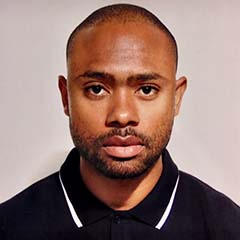
He said, “must be nice being able to spend your childhood growing up there.” I replied, “no.”
I knew I was gay from my earliest memories. I also knew it was dangerous and could possibly get me killed. I remember being a 7-year-old living in constant fear. I recall hearing family members talking about mob killings of other gay men and of how much they deserved it. It was celebrated. There I was, in the same room, knowing I was gay too. I have a vivid memory of my mom taking me to a barbershop on a Saturday morning. The shop was filled with hyper-masculine men. I remember feeling paralyzed in the barber’s chair. I feared if I moved, they would notice my feminine characteristics, and I would be killed.
At age 10, I moved to the U.S. to live with my uncle, my father’s youngest brother. My father died when I was 5 years old, and when I moved here, my mom worked as a live-in nanny for a family in New Jersey.
I remember leaving Jamaica feeling elated, thinking that I was escaping a destiny that scared me so much. I was wrong.
On Thanksgiving 2020, I spoke to my uncle, whom I haven’t spoken to since I was 16 years old. He told me that before my father died of cancer, he made my uncle, who idolized him, promise that he wouldn’t allow me to grow up gay.
This moment revealed two things to me: (1) since the age of 5, everyone knew I was gay, and (2) this revelation explained why those years I spent in my uncle’s house were a living hell with constant abuse and threats that if he found out I was gay, he was going to kill me.
High school was rough. I was in such a mentally dark place over everything I was going through with my sexuality.
I had limited social skills, and I still feared being gay was going to get me killed. I would skip classes to walk around the gay areas of the city. I remember stumbling across a group of openly gay individuals in front of a building in the West Village. I would stare at them from across the street.
One day, I was brave enough to walk over to the building and ask what it was. I found out it was a high school for LGBT+ kids named Harvey Milk High School. I decided I would try to transfer from my current school there, but my grades were so bad from skipping classes I wouldn’t be accepted.
At that time, I was 17-and-a-half years old. I decided to drop out of high school and try to get my GED. I spoke to the GED coordinator at Harvey Milk HS, Sheevan.
She wasn’t sure if I would be able to take the test because I didn’t have a social security number. At that time, I was still an undocumented immigrant, and so was my mom.
Once a week, there were attorneys from Urban Justice at Harvey Milk for students who needed legal advice on topics such as housing or violence. That’s when I met my attorney, Sydney.
Because being gay is still illegal in Jamaica, the law and my history of abuse, Sydney believed political asylum would be a good option for me. When I was 21 years old, I won my case and received my green card.
The conclusion of the story is: The thing that created a dark cloud over my childhood and adolescence, was the thing that saved me and gave me a new chance at life, a life where I could pursue my independence and be freed of the shackles of my abusive family. The thing that I thought would kill me, saved me.
That’s why I always try to motivate others to be positive, hopeful and determined. Your whole life can change in an instant, and for the better! Before moving to L.A. for this program, I was able to process my mother’s green card, who lived here for over 20 years undocumented. This is a woman who, when I admitted to being gay at 16 years old, said she hoped I got AIDS and died. The thing we both hated the most about me, turned out to be our saving grace.
How could I ever feel any negative feelings about being gay again? It saved my future, and I wouldn’t be here with you if it wasn’t for it.
And, that is why I’m unapologetically gay.
Constantly Underestimated
By Natalie Barajas DPT ’22
IT WAS MY SOPHOMORE YEAR OF UNDERGRAD, and I found myself in a meeting with my college advisor. Nothing unusual about this situation. The university paid her to guide conversations on determining majors, creating long-term plans and setting career goals.
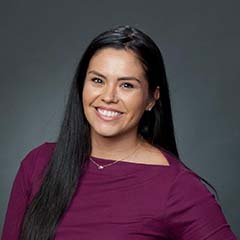
“Well, Natalia, what do you think you are interested in?” she asked. I quickly blurted out how much I loved the body, working with people and helping others.
She paused and said, “Why not a PE teacher?” and proceeded to say “I don’t see someone like you doing well in science classes or higher education so the physical therapy track wouldn’t be feasible.”
I would love to sit here and tell everyone that I quickly responded with a fiery rebuttal like I am sure some of you would expect me to do.
Instead, I said, “Umm, sure, that sounds great.” See, I didn’t even know what a physical therapist was or what she meant by saying “someone like you.” She was the college advisor. I genuinely believed she had my best interest.
I wish I could excuse her disbelief in me by telling you that this was a one-time encounter with this advisor, that she didn’t know me, and made a general assumption.
But she knew me quite well, see, I knew how she liked her coffee: a grande soy latte with extra foam at 185 degrees. I saw her every day as I was the barista that served her coffee. She would roll into Starbucks around 8 a.m. for her morning coffee before class with most of my classmates. On the other hand, I had been working since 4:30 in the morning. After completing a five-hour shift, I would run off to class, followed by volleyball practice and usually my second job working as a lifeguard. During undergrad, I lived on my own and worked three jobs to support myself. Yet this wasn’t worthy enough to see the determination and resilience created over years of hard work in my advisor’s eyes.
I am sure some folks are sitting here thinking that she must have known how busy I was, and that is probably why she didn’t encourage me to continue through the pre-physical therapy track because I have tried to excuse her words every since.
However, in a different conversation, I had the same advisor tell me that with the increase of minorities wanting to become kinesiology majors, she wanted to create a sports marketing pathway since the higher sciences were way too rigorous for these types students. Once again, underestimate students’ potential.
Little did I know that her disbelief in me caused me to take an extra three years to finish prerequisites to be able to apply to PT school. However, setbacks and jumping through extra hoops are too familiar for someone like me.
I remember being in elementary school when Proposition 227 passed in the late ’90s. This law discontinued bilingual education efforts in the classroom that supported non-English speakers.
Overnight, I was put into a speech and language pathology class because the district now deemed me as having a learning disability instead of the language barrier issue. My educational trajectory was changed ever since then.
When entering the DPT program, I struggled deeply with what some might call imposter syndrome. I felt that I didn’t deserve to be here, and my acceptance to the program was a fluke. In my first year, I hardly answered questions or spoke up in class. I always attributed it to being a second English learner and feeling that my words or how I articulated my thought process didn’t sound intelligent enough. Things got worst when classmates laughed and mocked how I pronounced some words in English.
The turning point for me was when I was placed in a clinical rotation with a highly dense Spanish-speaking population. It was there where I was able to understand the superpower of being bilingual by being the first medical provider that some had ever encountered that was able to explain the diagnoses in their native tongue.
There is an old Spanish proverb that has always resonated with me. It talks about a horse that fell into a deep hole and couldn’t get it out, and when the owner saw the horse’s despair, he decided he would bury it alive to take it out of his misery. The owner was in shock when the horse began to use the dirt thrown on him as a step and means to get himself out of the hole. (I swear this sounds a lot better in Spanish).
I know that my experience isn’t unique, and many have been let down by systems that should support them. I’m just fortunate that I can use the dirt as a stepping stone.

